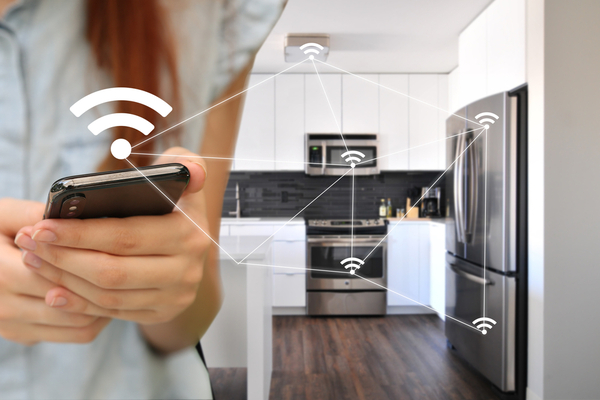It can be tough to know when to buy, when to hold off, and when to save your money altogether. So, what is worth the investment right now—and what’s worth waiting on?
With the exception of water-saving options, the cost of smart kitchen appliances makes them harder to recommend than gadgets in other areas of the home.
Faucet
Pros: You can turn on a smart faucet with a wave of your hand (helping you wash up without spreading germs to the hardware). You can also use your voice to dispense a certain amount of water, so you can fill a pot without waiting at the sink.
Cons: Some of the highest-end smart faucets can cost about seven times as much as the basic pull-down faucets, and about three times as much as the least expensive hands-free models.
Bottom line: In this age of germ and water-waste sensitivity, it might be one of the best smart home upgrades you can make.
Refrigerator
Pros: High-end models let you check the refrigerator contents, even while you’re at the grocery store; glance at your calendar on the door’s touch screen; and control the temperature from your phone (not that you’d ever necessarily need to).
Cons: Smart fridges can be costly—starting at roughly 20 to 30 percent more than regular models. Considering most people don’t upgrade their refrigerators on a whim, that’s a hard sell.
Bottom line: This should live in the “low priority” category. But if you’re renovating your kitchen and in the market for a fancy fridge, the one you choose may come with a few smart features anyway.
Range and oven
Pros: Some models connect to Wi-Fi so you can control them with your phone or voice (imagine preheating the oven from your lounge chair on the back deck). You’ll even get a phone notification when your meal is ready.
Cons: Safety features can limit the convenience of these products. Having to press a button on the oven before you turn it on with your phone sort of defeats the purpose.
Bottom line: If you do a lot of baking, the Wi-Fi connectivity is pretty useful for preheating—though certainly not necessary if you’re on a tighter budget.
Please Say a Command
When your hands are full or your phone is out of reach, voice control really brings smart homes to life. Voice assistants, like Amazon Echo and Google Home, are must-haves for any smart home—and with smaller units available for $50 or less, you can position a few throughout your space.
—
Photo Credit: Giulio Benzi / Shutterstock.com
